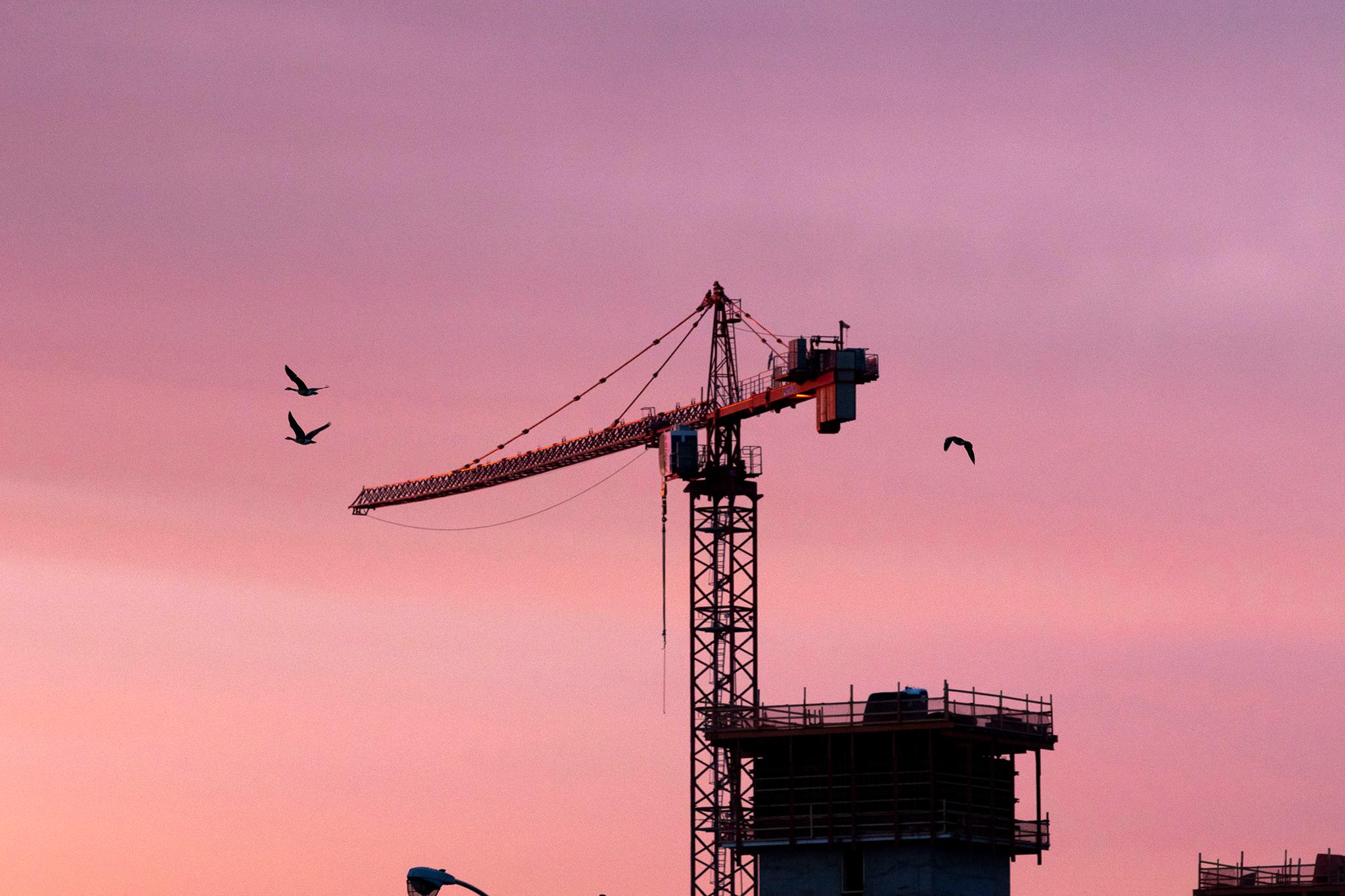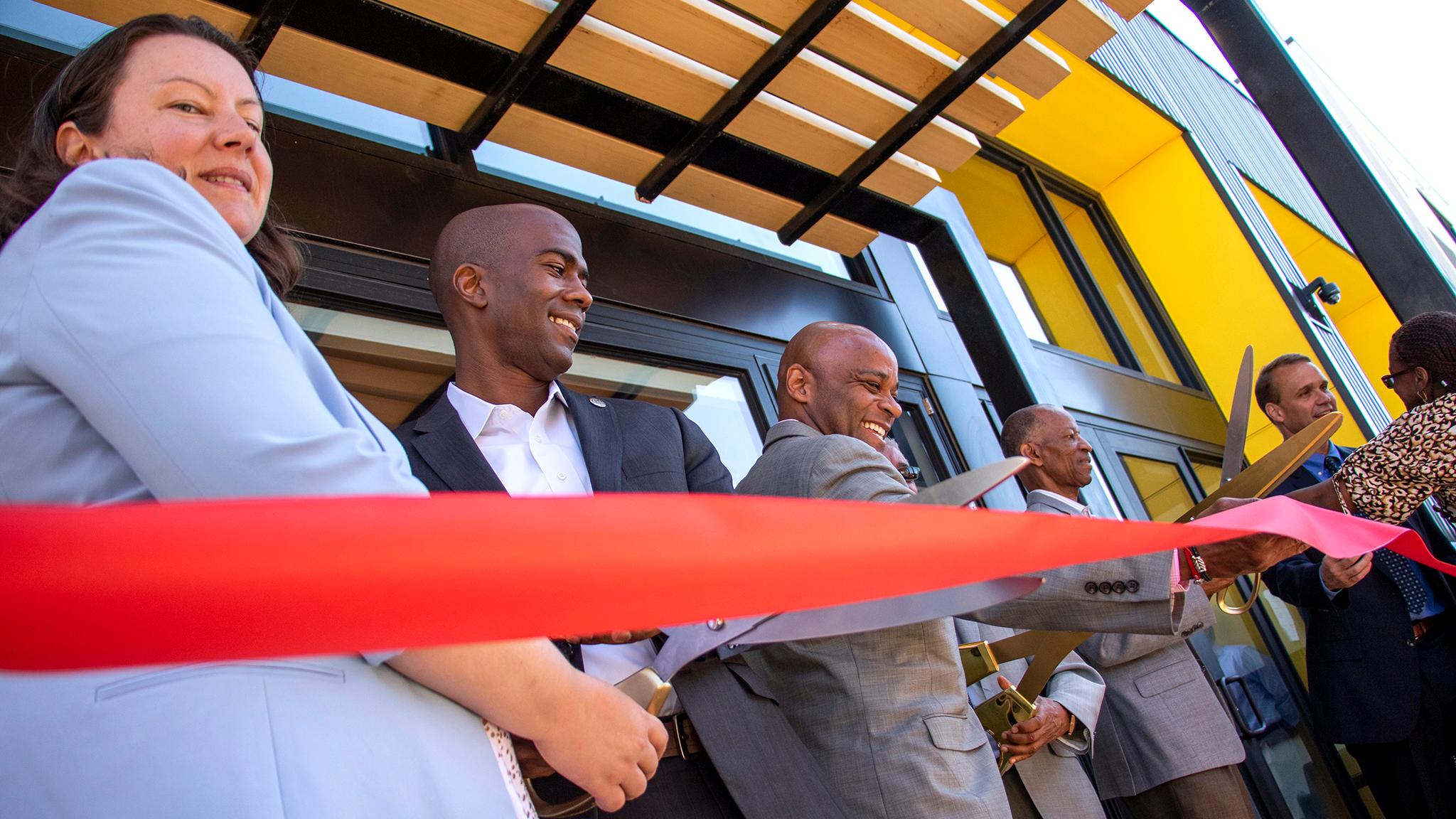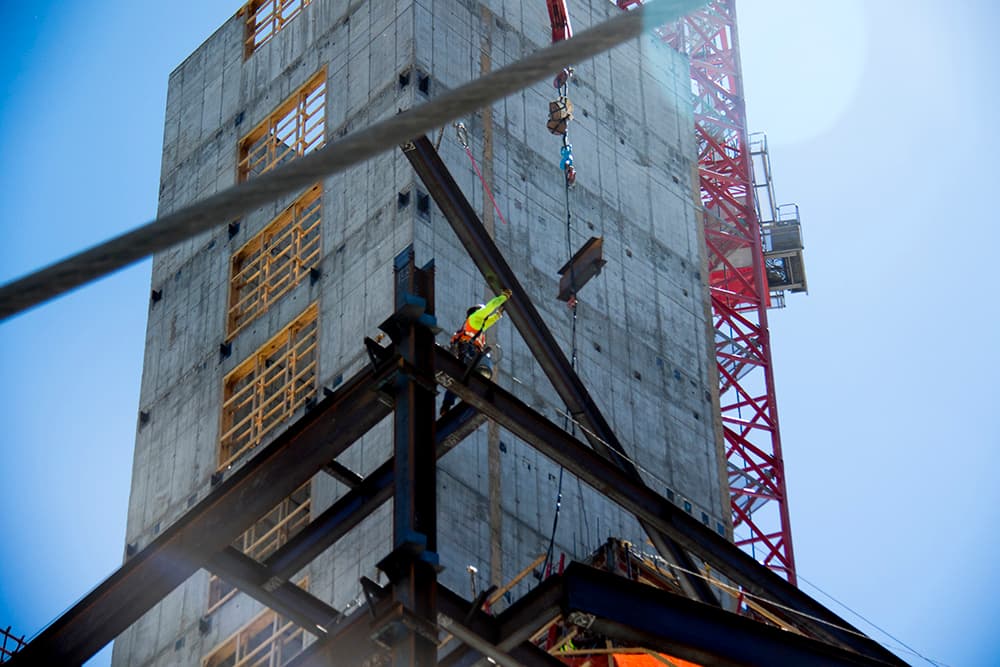Developer and former Republican candidate for statehouse Jon Roberts recently explained to Denverite why he has quit building the multifamily housing projects he'd prefer to create for million-dollar single-family homes: building the latter involves fewer hoops, shorter timelines, less risk and more profit.
Indeed, make it easier to build dense housing in Denver is the clarion cry of developers who want to profit from new multifamily housing. Building more apartments and condos is one of the quickest ways to address the affordable housing crisis in Denver, argues developer Andrew Feinstein.
But there are many rules and regulations in place that make such builds a challenge, Feinstein said, and if he could have his way, government would allow builders to build without so much interference.
The deregulation argument goes like this: Get rid of cumbersome rules and requirements, make it cheaper to do builds, and speed up the permitting and inspection process. If more housing is built and the demand decreases, prices will go down.
Some developers blame the city for dragging projects.
"You have a building department that takes way too long to get your permit," Feinstein said. "Every month you don't get your permit costs that builder ten grand, twenty grand, thirty grand a month because they're not getting going."

But is it Denver's planning department that's slowing down developers?
The city's permitting process on multifamily projects is running fairly smoothly.
Initial permitting applications are taking an average of four weeks to process, according to Denver Development Services. As of September, 82% of commercial reviews were completed on time (compared to just 10% of residential reviews). By mid-October, developers have already built more units of multifamily housing, 5,158, than they have since 2017.
Chris Gleissner, who oversees the review of every development larger than a duplex for Denver Community Planning and Development, said his department's goal is to work with developers to keep new projects on a tight timeline.
"It's really trying to work in lockstep to be as efficient as we can to get to the outcomes that we see," he explained.
And it's not the Department of Community Planning and Development that's setting up the rules that can slow down construction. Neighborhoods, voters and City Council have set goals for what their communities should look like and what safety measures need to be followed.
Without those restrictions, many fear developers would run amok, build shoddy developments and trash the city, destroy its character and create unsafe conditions.
"To the extent that those sort of expressed desires translate into code amendments and code changes, there is an...increased complexity to the regulations that come into place," Gleissner said. "But it's all about achieving the objectives that neighbors and city council have set out in terms of the vision for our neighborhoods and where we want to be."
And that vision clashes with the desires of developers to do things their own way -- as cheaply and quickly as they want. What they call government interference has less to do with top-down red tape and bureaucracy and more to do with how voters want the city to be designed.

The larger the project, the more complicated the rules. And more city agencies get involved.
Community Planning and Development might have to work with up to 52 entites for any given project, from Wastewater Management to the Department of Transportation and Infrastructure and Landmark Preservation.
"Not all 52 of those get involved in every one," Gleissner said. "That would be a big rarity to have that many. But it's typically 15 to 20 different agencies that we're working with for each development every time to really lock down all of the city as a whole's needs as to what we're expecting out of future developments."
What some developers experience as stumbling blocks Gleissner describes as "the system you work within."

Any new development has the potential to wreak havoc, and the system is in place to avoid that.
A lot can go wrong when a new building goes up. Zoning codes, Gleissner said, are in place to avoid mistakes.
A project might need a right-of-way dedication, which allows the width of the sidewalk to be increased so people can actually get around. Trees should be added to the neighborhood -- and they'd better be the right types rather than invasive species that can gobble up a neighborhood. Is there a fire hydrant nearby? What about adequate sewage or water lines?
New projects should be accompanied by adequate street or alley sizes. Cars, busses, pedestrians and bikers need to get around safely. And is there enough parking on site so the project doesn't jam the neighborhood? Do bikers have a safe place to lock up? What sort of grading needs to be done?
"You're looking at making sure that the properties drain appropriately in the event that we ever see rain again," Gleissner said.
And are the buildings the right height for the neighborhood? Do they have an extra story? Are they up to whatever architectural standards the community expects? Do they wreck a historic building?

The city is trying to work in collaboration with -- not opposition to -- developers, Gleissner said.
"With any of our projects, it's never the developer and the city," said Gleissner. "It's kind of one big team trying to work through and get their project realized, because it's in the best interest of the city to see these projects move forward and deliver that housing. It's in the best interest of the development community to move forward with their projects and get those things done."
From the moment an idea is conceived, Gleissner encourages developers to show up to a meeting with what he calls a "napkin sketch." They share their initial thoughts and dreams, and his department helps them understand what will and won't work, what unexpected costs might arise and what zoning issues may prevent the project from working.
Yet projects are complicated. Sometimes visions change midway, and when they do, developers can bump up against unexpected zoning requirements -- and as much as the Gleissner's team wants to foresee every potential obstacle, that's just not always possible.
When things slow down, developers can be impatient.
"We kind of joke that the best time to get your approval was yesterday," Gleissner said. "I think there's always the desire to push ahead and be as expeditious as possible. And that's both on our side and our development community side, right? It doesn't do me any good to see how long I can keep a project in a review cycle."













